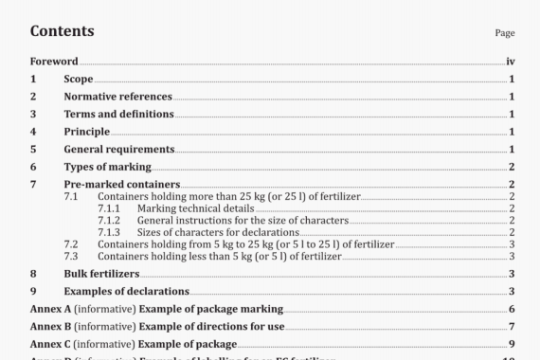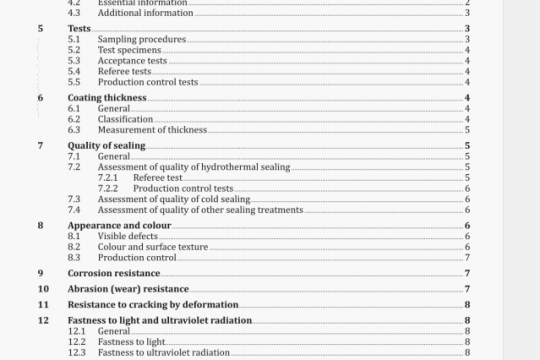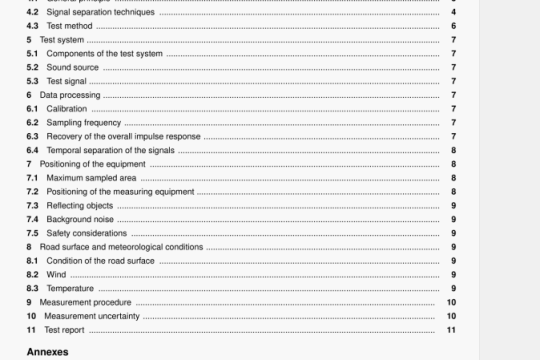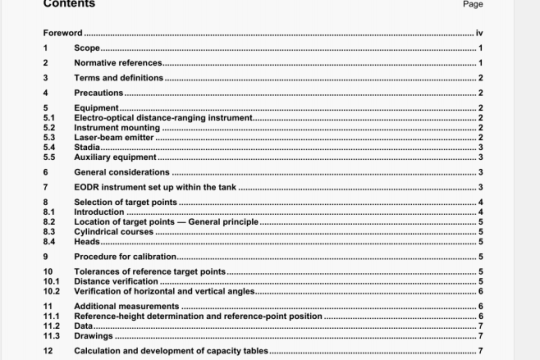ISO 13408-2:2003 pdf download
ISO 13408-2:2003 pdf download.Aseptic processing of health care
products一 Part 2: Filtration.
3.16
nominal pore size rating
pore size of a filter as claimed and stated by the filter manufacturer
3.17
worst case
most challenging pre-determined condition(s) and specification(s) applied in a process to be validated
4 General requirements
The requirements of ISO 13408-1:1998 shall apply.
5 Selection of filters and filter assemblies based on filter manufacturer’s data
5.1 Selection shall document the choice of the most suitable type(s) of filter, taking into account the chemical and physical characteristics of the filters as established by the filter manufacturers.
NOTE For further information see A. 1.
5.2 The filters selected shall have a quality certificate.
NOTE For further information see A.2.
5.3 Filters shall not contain asbestos and shall not be fibre-releasing. Where the use of fibre-releasing filters
is dictated by product need, it shall be demonstrated that the fibres are removed downstream of filtration.
6 Fluid-specific selection criteria based on filter user’s data
6.1 The filter user shall evaluate filter characteristics following a documented filter evaluation programme that takes into account the fluid to be filtered and the process used for filtration. Filter characteristics shall not be adversely affected by the fluid to be filtered; conversely, the product shall not be adversely affected by the filter. Adsorption of fluid components and extraction of filter components shall be evaluated.
6.2 For filter characterization, the following shall be taken into account:
a) compatibility between filter and fluid;
1) effects of the formulation and process conditions on the chemical and physical attributes and performance of the filter;
2) effects of the filter on the relevant biological, chemical and physical attributes of the product;
b) process characteristics;
1) effective filter surface area required;
2) pre-filtration requirements for reduction of particulate matter and reduction of bioburden.
Compatibility and process criteria, as applicable, should also be applied to pre-filters in view of their intended use.
7 Filtration process
7.1 Process parameters
7.1.1 Process parameters shall be established, qualified and documented, and the process validated by the filter user. Factors to be defined or specified include:
a) flushing procedures, including filter(s) and downstream flow path (or justification for lack of flushing);
The flushing process applied should ensure that the filtrate meets acceptable limits for extractables, insoluble particles and oxidizable substances.
NOTE 1 Information from the filter manufacturer can be useful in designing and validating a flushing procedure.
NOTE 2 Results from a permanganate reduction test and/or total organic carbon (TOC) test can be useful in designing and validating a flushing procedure.
b) sterilization procedures for the filter assembly, filtration system and fluid path, including the permissible limit for cumulative sterilization time and/or number of cycles at applicable sterilization conditions in case of multiple sterilizations and re-use;
c) filtration process conditions;
1) fluid pre-filtration holding time and effect on bioburden;
2) filter conditioning, with fluid if necessary;
3) filtration time/total time filter is in contact with fluid;
4) maximum number of repeated filtrations;
5) flowrate;
6) filtration volume;
7) temperature;
8) differential pressure;
d) cleaning procedures for the filtration system.
7.1.2 Written integrity test procedures shall be established, including acceptance criteria and methods of failure investigation and conditions under which the filter integrity test can be repeated.
It should be demonstrated that the integrity test procedure(s) can be supported by bacterial-retention testing. The standardized bacterial-retention tests should use a challenge level of at least io colony-forming units per square centimetre of effective filtration area, with filters representative of standard production filters as close as possible to the minimum integrity test specification.
NOTE Information from the filter manufacturer can be useful in designing and validating integrity test procedure(s) based on gas flow through a wetted filter.
7.1.3 One or more appropriate wetting fluids shall be selected. These shall be the filter manufacturer’s recommended reference wetting fluid or the fluid to be filtered. In the latter case, the appropriate integrity test value specification shall be established and validated. The wetting fluid shall be compatible with, and shall not impart impurities to, the fluid to be filtered or the filter assembly.
7.1.4 For air and gas filters, an appropriate frequency for physical integrity testing shall be established.




